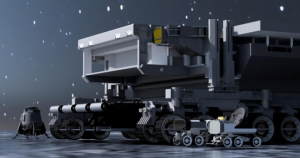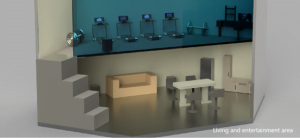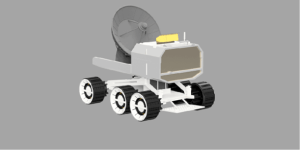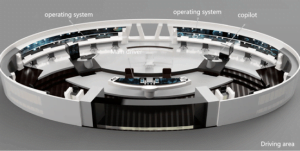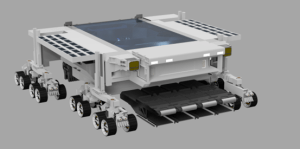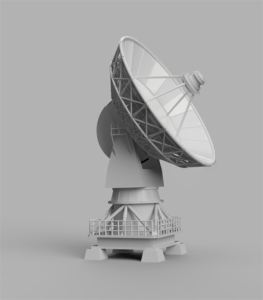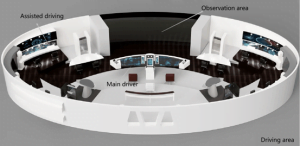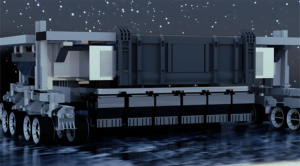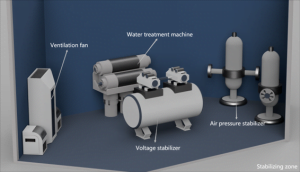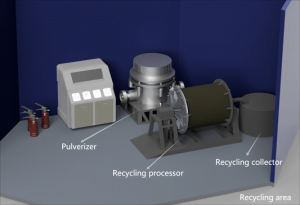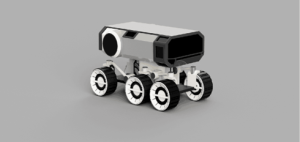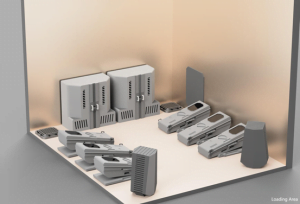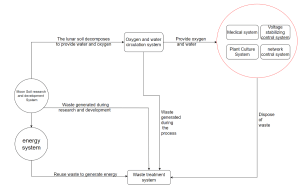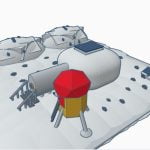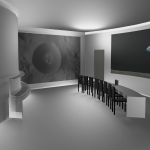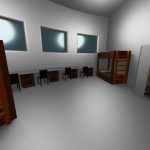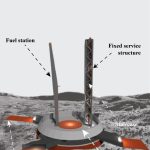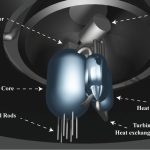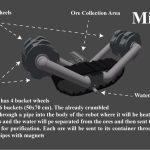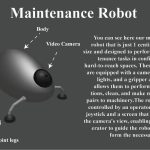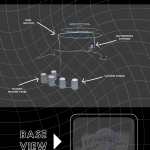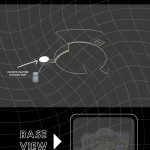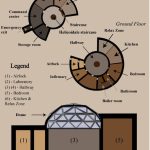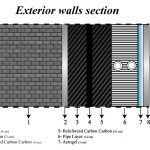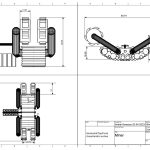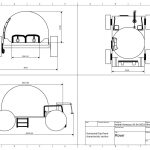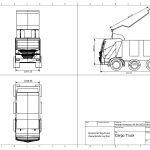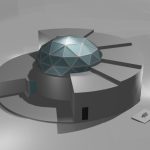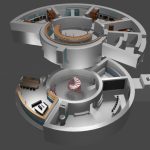2.1 – Where do you want to build your Moon Camp? Explain your choice.
We aim to build a mobile lunar base in a mild and welllit areanear the South Pole of the Moon. Compared to other areas, this region has longer daylight hours, stable temperatures, and is more suitable for living and working. The flat terrain makes it easy to construct the base and reduces construction costs and difficulties. Additionally, the area has high potential for water resources, which can provide a water source for the base. Lastly, this region also has scientific exploration value. The flat lunar surface near the South Polemay contain richer geological and chemical information, providing more opportunities for lunar scientific exploration. Therefore, we have chosen to build a mobile lunar base in this region to achieve our goals and provide more scientific value.
2.2 – How do you plan to build your Moon Camp? Consider how you can utilise the Moon’s natural resources, and which materials you would need to bring from Earth. Describe the techniques, materials and your design choices.
We will start by utilizing the Moon’s natural resources, particularly the regolith, which is the top layer of soil on the Moon. The regolith contains various materials such as oxygen, water, and metals, which we can mine and use for our construction and other needs. This approach will reduce the amount of materials that need to be brought from Earth, making project more cost-effective and sustainable.
For the Moon camp’s structure, we will use inflatable modules made of Kevlar or other strong materials. These modules are lightweight, compact, and can be easily transported by the rover. They can also withstand the Moon’s extreme temperatures and radiation, making them ideal for Moon habitation. Once onsite, the modules can be inflated to their full size, providing ample space for living quarters, laboratories, and other functional areas.
To reduce the need for additional materials from Earth, we will use 3D printing technology to manufacture parts and tools onsite. This technology will allow us to quickly repair and replace parts if needed, ensuring the Moon camp’s sustainability and longevity. Additionally, it will enable us to adapt to unexpected situations or requirements that may arise during the Moon mission.
Overall, these design choices will enable us to build a sustainable and longlasting Moon camp for future exploration and research. The Moon camp will utilize the camp’s resources, employ inflatable modules made of strong materials, have a stabilizing mechanism, include functional areas, and use 3D printing technology to reduce the need for additional materials.
2.3 – How does your Moon Camp protect and provide shelter to your astronauts against the Moon’s harsh environment?
Our Moon Camp is designed to protect and provide shelter to our astronauts against the harsh environment of the Moon. The Moon’s extreme temperatures, radiation, and lack of atmosphere pose significant challenges to human survival.
To address these challenges, we have chosen to use inflatable modules made of strong materials such as Kevlar. These modules can be easily transported by the rover and inflated onsite, providing a secure and insulated living space for our astronauts. The materials used in the modules are specifically chosen for their ability to withstand the Moon’s harsh environment, including extreme temperature changes and exposure to radiation.
In addition to the inflatable modules, we will also incorporate a stabilizing mechanism to ensure the Moon Camp remains stable and secure. The stabilizing mechanism will counteract the Moon’s gravity and prevent the Moon Camp from shifting or toppling over. This will provide additional protection to our astronauts and their living space.
Our Moon Camp will also include functional areas such as a medical area, living quarters, and a waste management area. These areas will be designed to provide additional protection to our astronauts, with features such as radiation shielding and air filtration systems.
Overall, our Moon Camp is designed to provide a secure and insulated living space for our astronauts, while also incorporating features to protect them from the Moon’s harsh environment. By utilizing strong materials, a stabilizing mechanism, and functional areas designed for protection, we are confident that our Moon Camp will provide a safe and comfortable environment for future exploration and research on the Moon.






